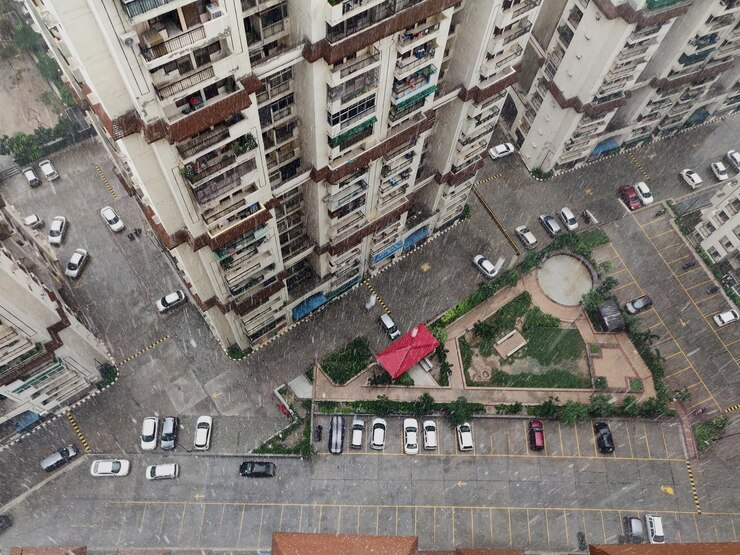Amongst the first questions that hit your thoughts if you are going to construct your dream home in Jaipur is “How many stories is it legally possible to construct?” For a home owner, builder or real estate investor, it is important to understand the local building bylaws to avoid legal problems and actually exploit the potential of the property.
In this blog, we will dissect how many floors the residential buildings will have in Jaipur under the Rajasthan Model Building Regulations, 2025. We’ll also consider the role of plot size, road width and other such key factors that impact on your construction rights.
What Determines the Number of Floors You Can Build?
In Jaipur, the number of floors you can construct on a residential plot depends primarily on:
- Plot Size
- Road Width
- Zoning regulations
- Height restrictions
- Setbacks and Floor Area Ratio (FAR)
Let’s dive deeper into the specifics based on current building bylaws.
Floor Limits Based on Plot Size & Road Width
1. Plots up to 90 square meters
- Permitted Floors: Ground + 2 (G+2)
- Maximum Height: 9 meters
- Road Width Required: No specific road width required
- Purpose: Suitable for small homes and budget-friendly residential units
New in 2025: According to the updated Rajasthan Building Regulations, homes on plots of 90 sqm can now legally have two storeys above the ground floor. This change is aimed at maximizing usable space for small-plot owners.
2. Plots between 91 – 225 square meters
- Permitted Floors: Ground + 2 (G+2)
- Maximum Height: 12 meters
- Minimum Road Width: 9 meters
- Additional Allowances: Shops and businesses allowed on the ground floor in some cases
This category targets medium-sized residential properties, often ideal for duplex homes or homes with rental floors.
3. Plots between 226 – 500 square meters
- Permitted Floors: Ground + 3 (G+3)
- Maximum Height: 15 meters
- Minimum Road Width: 12 meters
- Note: Apartments/flats are only allowed on plots larger than 500 sqm
This gives more flexibility to landowners looking to construct larger family homes or future-ready homes with extra floors for rental income or home offices.
4. Plots over 500 square meters
- Permitted Floors: High-rise buildings allowed (subject to approvals)
- Height: Based on FAR, road width, and special permissions
- Minimum Road Width: 12 meters
- Additional Rules: Requires adherence to safety norms, elevator installation, and open space regulations
For these plots, construction scope increases significantly, but so do the compliance and regulatory requirements. Approval from the Jaipur Development Authority (JDA) is mandatory.
Why Road Width Matters
Road width adjacent to your plot plays a critical role in determining how many floors you can build. Here’s a quick summary:
| Road Width | Maximum Height Allowed | Floors Typically Allowed |
| Less than 9 meters | Up to 9 meters | G+2 |
| 9 – 12 meters | Up to 12 meters | G+2 to G+3 |
| More than 12 meters | Beyond 15 meters (with approvals) | G+4 and beyond |
The wider the road, the more height and floors you can legally build, especially in plotted developments and group housing projects.
Special Rules for Flats & Group Housing
Planning to build apartments or a group housing project? Here are the specific rules:
- Minimum Plot Size: 750 square meters
- Minimum Road Width: 12 meters
- Mandatory Facilities:
- Parking space as per Regulation 121
- 10% green space allocation
- 2% area for community amenities like society office, toilet blocks, and storage rooms
Developers must also follow safety, fire, and environmental regulations as per the National Building Code (NBC).
Green Building & Township Regulations (2025)
The new Rajasthan Model Building Regulations have emphasized sustainable development and better town planning:
- Green Buildings: Compulsory for all plots above 2,500 sqm in urban areas
- Group Housing:
- 40% of land to be used for residential buildings
- 3% for playgrounds and parks
- Developers must maintain facilities for at least 7 years after project completion
This shift encourages eco-friendly development with adequate open spaces and infrastructure.
Key Compliance Tips for Home Builders in Jaipur
Before starting construction, keep these important tips in mind:
- Consult with a certified architect who understands JDA guidelines
- Apply for building plan approval from JDA or the local urban body
- Follow proper setbacks, FAR limits, and height rules
- Ensure you leave enough open area for ventilation, lighting, and safety
- Stay updated with the latest Rajasthan Model Building Regulations
Final Thoughts: Talk to an Expert Before You Build
Building a home is a major investment—one that should comply with local building bylaws to avoid penalties or demolition orders. Jaipur’s new changes in regulations for 2025 are more lenient but nevertheless organized to promote sustainable and organized urban growth.
The number of floors that is permitted in Jaipur is determined by the size of your plot, width of the road, and compliance to regulations irrespective of whether you are building a small 90 sqm or a multi-storey apartment complex. Always seek an opinion of a local architect or Jaipur Development Authority before embarking on your project.
At Walls and Dreams, we specialize in helping homeowners and builders navigate Jaipur’s construction rules and create compliant, beautiful residential spaces. From architectural planning to project execution, we ensure your dream home stands tall—legally and beautifully.







